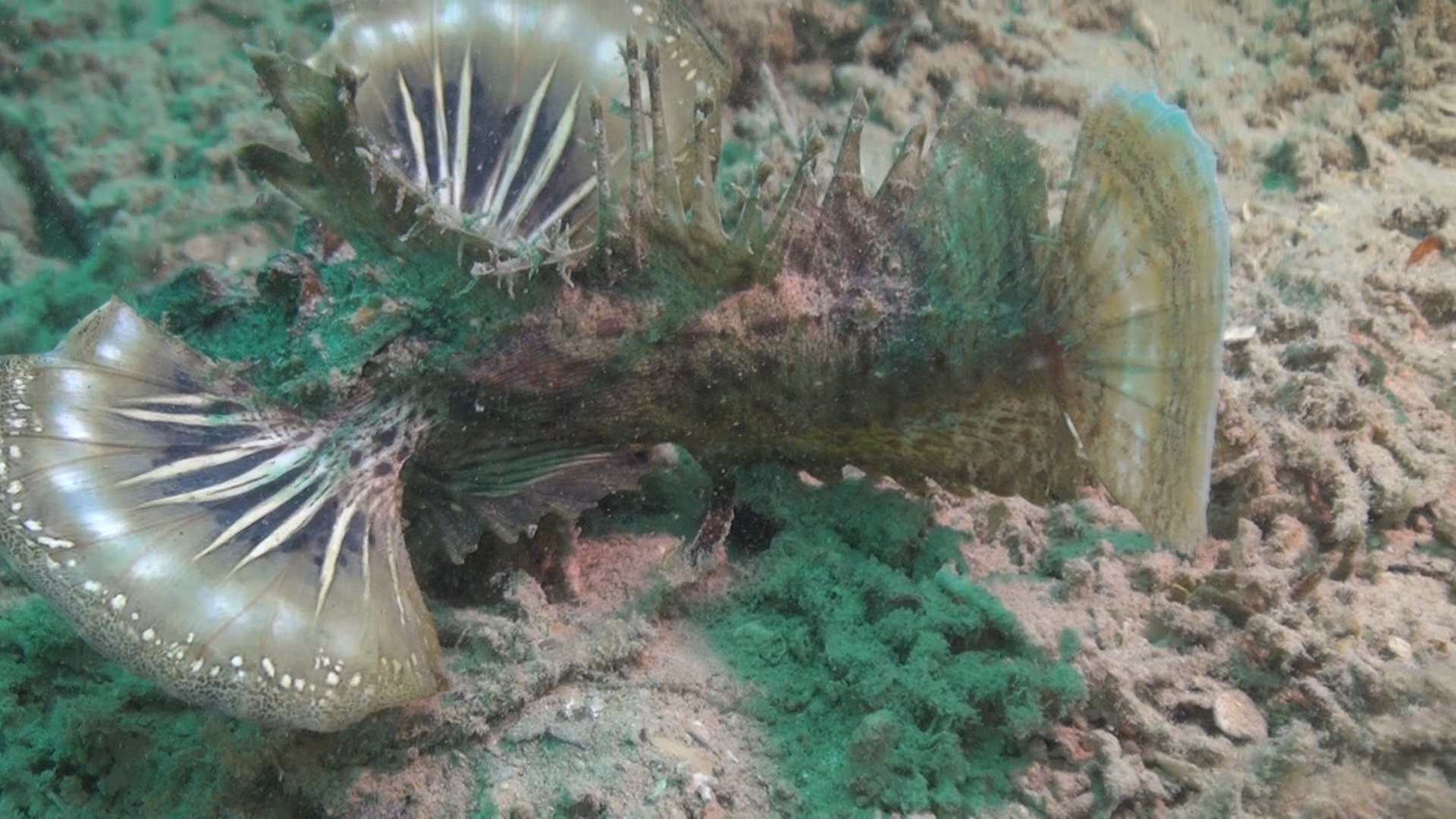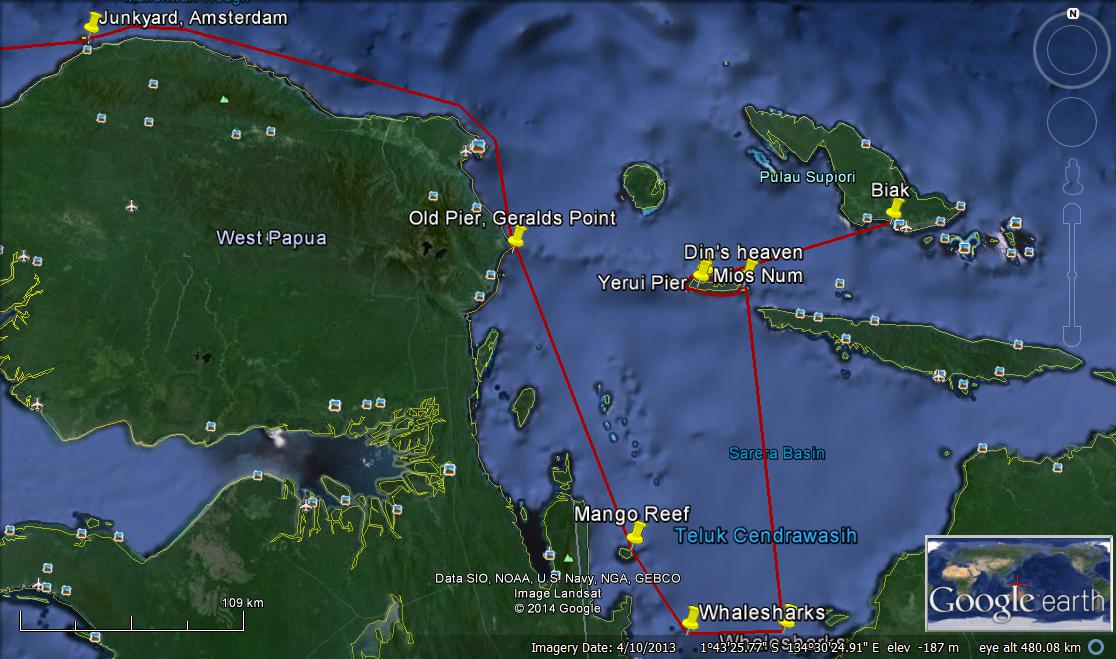
Muck diving gets its name from the type of environment at the bottom of the dive sites.
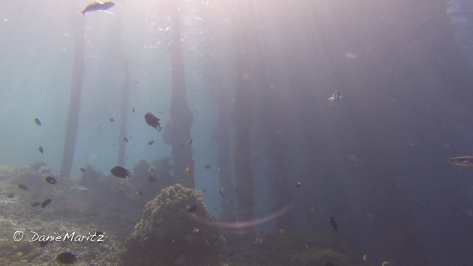
Under a jetty
It is frequently muddy, silty, sandy or old volcanic ash, as well as areas with lots of vegetation and other man made rubbish. You often see bizarre and unusual creatures on such dives.
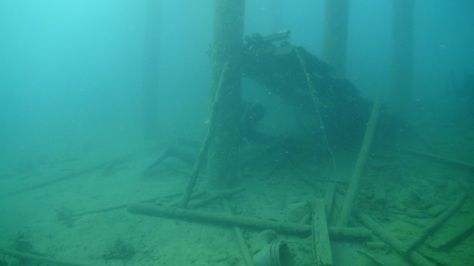
under a jetty
Muck diving in Cenderawasih Bay turned out to be quite a pleasant surprise.
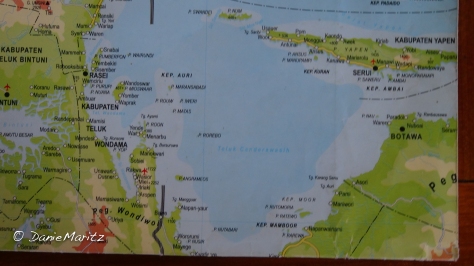
Cenderawasih Bay
Especially under a jetty, there are many strange, creatures swimming and crawling around. Really a worthwhile experience
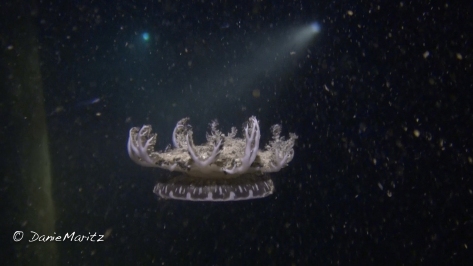
Upside-down jellyfish (Cassiopea andromeda)
The Upside-down jellyfish (Cassiopea andromeda) is a true jellyfish. The medusa lies upside down on the bottom and from there it’s name. It has a mild sting from stinging cells that are secreted in a mucus layer that covers the jellyfish when it feels threatened.The colours can vary quite a bit depending on the location. It’s about the size of a man’s hand.
On the video it can be seen that some discarded plastic-can turned out to be quite a popular place with fish that were moving in and out constantly.
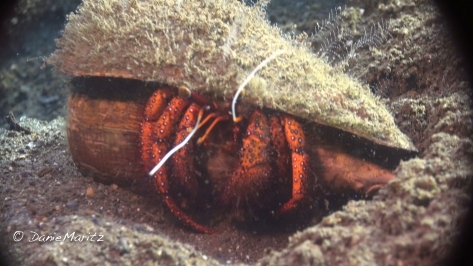
White-spotted Left-handed Hermit Crabs (Dardanus megistos)
The White-spotted Left-handed Hermit Crabs (Dardanus megistos) are quite interesting to watch. They can move around very fast.
The Anemone Hermit Crab (Dardanus pedunculatus), on he video, is carrying four anemones on its shell and they will be transferred onto the new bigger, shell, once the crab has outgrown this one.
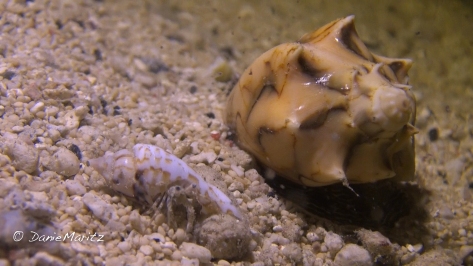
Tiny Hermit Crab (Pagurixus rubrovittatus)
This Tiny Hermit Crab (Pagurixus rubrovittatus) is very small, especially if you compare it to the snail next to it. My video lights were attracting thousands of Krill. This little Hermit Crab couldn’t believe his luck and couldn’t eat all the food fast enough that was coming his way. He was having an absolute feast.
The Tail-spot Squirrelfish (Sargocentron cornutum) is very common.
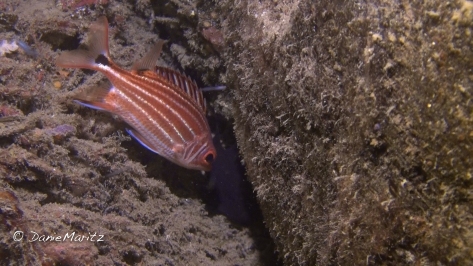
Tail-spot Squirrelfish (Sargocentron cornutum)
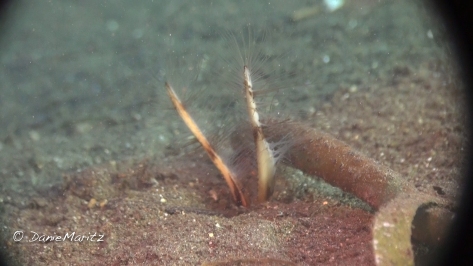
Honeycomb Worms (Sabellariidae lygdamis)
The Honeycomb Worms (Sabellariidae lygdamis) are very difficult to photograph. They disappear underground, extremely fast, whenever they detect the slightest movement.
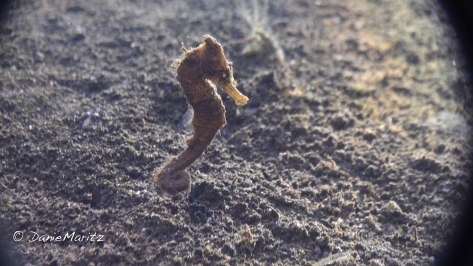
Half-spined Seahorse (Hippocampus semispinosus)
The Half-spined Seahorse (Hippocampus semispinosus) seems to float around and go with the flow. It will curl its tail around a leaf or branch once it reaches a suitable spot where it wishes to stay. It is also one of the suction feeders.
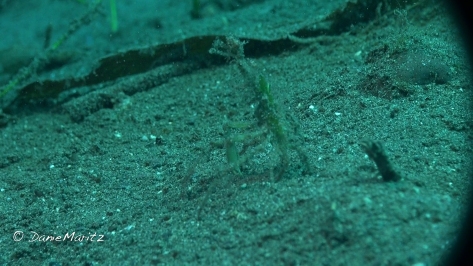
Praying-Mantis Shrimp (undescribed)
This Praying-Mantis Shrimp (undescribed), so named by myself, is a very unusual looking shrimp. It is covered in camouflage and looks exactly like a Praying Mantis walking around on the sand. It might be a Hyastenus bispinosus (Arrow crab).
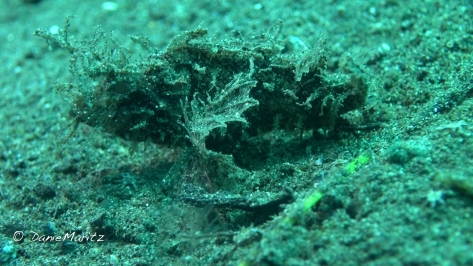
Devilfish (Inimictus didactylus)
The Devilfish (Inimictus didactylus) is part of the larger Scorpionfish group. It is extremely ugly and crawls around on the sandy bottom.
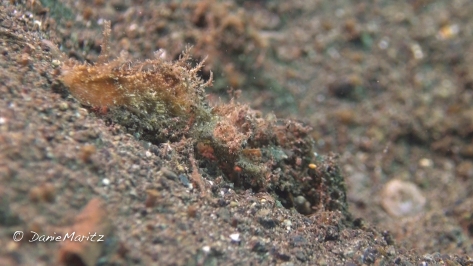
Long-Tailed Sea Hare (Stylocheilus spp)
Even the Long-Tailed Sea Hare (Stylocheilus spp) and Nudibranchs are fairly colourless to blend in with the “muck” as part of their camouflage.
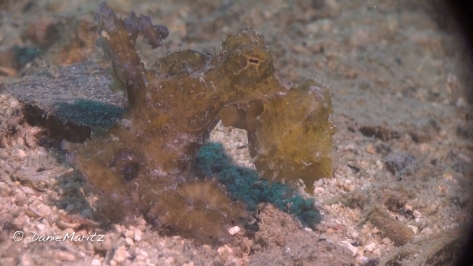
Pygmy Octopus
The little Pygmy Octopus with it’s rectangular eyes is very cute to watch as it jogs along the sandy bottom.
You can also watch the video on YouTube at:

